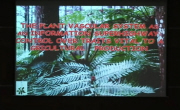This study assessed effective strategies to reduce the sodium intake among consumers using pork cutlet sauce as a model food system. Original pork cutlet sauce and sodium-reduced sauce (29% reduced by a salt substitute) were analyzed to characterize t...
http://chineseinput.net/에서 pinyin(병음)방식으로 중국어를 변환할 수 있습니다.
변환된 중국어를 복사하여 사용하시면 됩니다.
- 中文 을 입력하시려면 zhongwen을 입력하시고 space를누르시면됩니다.
- 北京 을 입력하시려면 beijing을 입력하시고 space를 누르시면 됩니다.

Effective Strategies to Reduce Sodium Intake among Consumers: Pork Cutlet Sauce as a Model Food System
한글로보기https://www.riss.kr/link?id=A105766837
- 저자
- 발행기관
- 학술지명
- 권호사항
-
발행연도
2018
-
작성언어
English
- 주제어
-
등재정보
KCI등재
-
자료형태
학술저널
- 발행기관 URL
-
수록면
416-426(11쪽)
-
KCI 피인용횟수
0
- DOI식별코드
- 제공처
-
0
상세조회 -
0
다운로드
부가정보
다국어 초록 (Multilingual Abstract)
This study assessed effective strategies to reduce the sodium intake among consumers using pork cutlet sauce as a model food system. Original pork cutlet sauce and sodium-reduced sauce (29% reduced by a salt substitute) were analyzed to characterize the sensory properties using descriptive analysis. The effects of sodium-reduction of the sauce, consumer type (nutrition teachers vs. general consumers), information related to the sodium content, serving method, and consumer’s health, taste and sodium-related attitudes on the consumer’s preference, perception, and intake of the sauce were analyzed using a consumer test. In descriptive analysis, the original and sodium-reduced sauce showed similar sensory characteristics but did not differ in saltiness. In the consumer test, there were no significant differences in the overall preference levels between the two sauces. On the other hand, there were significant differences in preference and perception between nutrition teachers and general consumer groups, which were due largely to their age as well as the health and sodium-related attitudes and nutritional knowledge differences. Sodium-reduced information decreased the perceived saltiness intensity. In addition, reducing sodium intake by serving pork cutlet sauce in a bottle can be an effective strategy because this serving method increased the acceptance and induced the smaller intake of sauce.
목차 (Table of Contents)
- Abstract
- I. Introduction
- II. Materials and Methods
- 1. Descriptive analysis
- 2. Consumer test
- Abstract
- I. Introduction
- II. Materials and Methods
- 1. Descriptive analysis
- 2. Consumer test
- III. Results and Discussion
- 1. Descriptive Analysis
- 2. Consumer test
- IV. Summary and Conclusion
- References
참고문헌 (Reference)
1 김은경, "학교 급식 영양(교)사의 나트륨 저감화 인식도, 실천도 및 저감화 방안" 한국식품조리과학회 32 (32): 222-232, 2016
2 이선규, "초·중학교 학교급식 중 나트륨, 칼륨 섭취실태 조사" 한국식품과학회 42 (42): 578-585, 2010
3 임아현, "지자체의 나트륨 섭취 감소 계획 평가 및 근거 기반 목표 재설정 : 서울시 사례를 중심으로" 한국영양학회 50 (50): 664-678, 2017
4 문현옥, "전북지역 초등학교 교사의 나트륨에 대한 지식, 나트륨섭취 식행동, 저염식 태도 및 식생활지도와의 관계 연구" 한국영양학회 50 (50): 180-191, 2017
5 배윤정, "일부 남녀 대학생의 나트륨 관련 영양지식에 따른 나트륨 식태도, 식행동에 관한 연구" 대한지역사회영양학회 20 (20): 327-337, 2015
6 이원갑, "소비자의 인구통계학적 특성에 따른 선호메뉴 유형에 관한 연구: 대구ㆍ경북을 중심으로" (사)한국조리학회 20 (20): 89-104, 2014
7 이정희, "경기지역 초․중․고등학교 영양(교)사의 나트륨 저감화에 대한 인식도 및 실천도" 동아시아식생활학회 22 (22): 734-743, 2012
8 Zandstra, E. H., "nfluence of health and taste attitudes on consumption of low-and high-fat foods" 12 (12): 75-82, 2001
9 Grummer, J., "Use of potassium chloride and flavor enhancers in low sodium Cheddar cheese" 96 (96): 1401-1418, 2013
10 Lucas, L, "The influence of sodium on liking and consumption of salty food" 76 (76): 2011
1 김은경, "학교 급식 영양(교)사의 나트륨 저감화 인식도, 실천도 및 저감화 방안" 한국식품조리과학회 32 (32): 222-232, 2016
2 이선규, "초·중학교 학교급식 중 나트륨, 칼륨 섭취실태 조사" 한국식품과학회 42 (42): 578-585, 2010
3 임아현, "지자체의 나트륨 섭취 감소 계획 평가 및 근거 기반 목표 재설정 : 서울시 사례를 중심으로" 한국영양학회 50 (50): 664-678, 2017
4 문현옥, "전북지역 초등학교 교사의 나트륨에 대한 지식, 나트륨섭취 식행동, 저염식 태도 및 식생활지도와의 관계 연구" 한국영양학회 50 (50): 180-191, 2017
5 배윤정, "일부 남녀 대학생의 나트륨 관련 영양지식에 따른 나트륨 식태도, 식행동에 관한 연구" 대한지역사회영양학회 20 (20): 327-337, 2015
6 이원갑, "소비자의 인구통계학적 특성에 따른 선호메뉴 유형에 관한 연구: 대구ㆍ경북을 중심으로" (사)한국조리학회 20 (20): 89-104, 2014
7 이정희, "경기지역 초․중․고등학교 영양(교)사의 나트륨 저감화에 대한 인식도 및 실천도" 동아시아식생활학회 22 (22): 734-743, 2012
8 Zandstra, E. H., "nfluence of health and taste attitudes on consumption of low-and high-fat foods" 12 (12): 75-82, 2001
9 Grummer, J., "Use of potassium chloride and flavor enhancers in low sodium Cheddar cheese" 96 (96): 1401-1418, 2013
10 Lucas, L, "The influence of sodium on liking and consumption of salty food" 76 (76): 2011
11 Deliza, R., "The generation of sensory expectation by external cues and its effect on sensory perception and hedonic ratings: a review" 11 (11): 103-128, 1996
12 Guàrdia, M. D., "Sensory characterisation and consumer acceptability of small calibre fermented sausages with 50% substitution of NaCl by mixtures of KCl and potassium lactate" 80 (80): 1225-1230, 2008
13 Noort, M. W., "Saltiness enhancement by taste contrast in bread prepared with encapsulated salt" 55 (55): 218-225, 2012
14 Kremer, S., "Salt reduction in foods using naturally brewed soy sauce" 74 (74): 2009
15 Strazzullo, P, "Salt intake, stroke, and cardiovascular disease:meta-analysis of prospective studies" 339 : b4567-, 2009
16 Breslin, P. A. S., "Salt enhances flavour by suppressing bitterness" 387 (387): 563-, 1997
17 안소현, "Salt content of school meals and comparison of perception related to sodium intake in elementary, middle, and high schools" 한국영양학회 7 (7): 59-65, 2013
18 Birch, L. L., "Right sizing prevention. Food portion size effects on children’s eating and weight" 88 : 11-16, 2015
19 McGough, M. M., "Reducing sodium levels in frankfurters using a natural flavor enhancer" 91 (91): 185-194, 2012
20 Freedman, M. R., "Reducing portion size reduces food intake and plate waste" 18 (18): 1864-1866, 2010
21 Roininen, K., "Quantification of consumer attitudes to health and hedonic characteristics of foods" 33 (33): 71-88, 1999
22 Rolls, B. J., "Portion size of food affects energy intake in normal-weight and overweight men and women" 76 (76): 1207-1213, 2002
23 Jung Jinee., "Policy Trends of Sodium Reduction" 49 (49): 2-7, 2016
24 Wardle, J, "Nutrition knowledge and food intake" 34 (34): 269-275, 2000
25 Gomes, A. P., "Manufacture of low-sodium Minas fresh cheese: effect of the partial replacement of sodium chloride with potassium chloride" 94 (94): 2701-2706, 2011
26 Clark, C. C., "Limiting response alternatives in time-intensity scaling: an examination of the halo-dumping effect" 19 (19): 583-594, 1994
27 Korea Centers for Disease Control, "Korea Health Statistics 2016: Korea National Health and Nutrition Examination Survey (KNHANES-1)"
28 Kim, M. K, "Influence of packaging information on consumer liking of chocolate milk" 96 (96): 4843-4856, 2013
29 Levis, P. A., "Influence of healthy concepts and product acceptance: A study with plain potato chips" 3 (3): 45-63, 1997
30 Annett, L. E., "Influence of health and environmental information on hedonic evaluation of organic and conventional bread" 73 (73): 2008
31 Kim, M. K., "Influence of functional information on consumer liking and consumer perception related to health claims for blueberry functional beverages" 50 (50): 70-76, 2015
32 Liem, D. G., "Health labelling can influence taste perception and use of table salt for reduced-sodium products" 15 (15): 2340-2347, 2012
33 Liem, D. G., "Effects of health labels on expected and actual taste perception of soup" 25 (25): 192-197, 2012
34 Vidigal, M. C., "Effect of a health claim on consumer acceptance of exotic Brazilian fruit juices: Açaí(Euterpe oleracea Mart.), Camu-camu (Myrciaria dubia), Cajá (Spondias lutea L.) and Umbu (Spondias tuberosa Arruda)" 44 (44): 1988-1996, 2011
35 Roininen, K., "Differences in health and taste attitudes and reported behaviour among Finnish, Dutch and British consumers: a cross-national validation of the Health and Taste Attitude Scales (HTAS)" 37 (37): 33-45, 2001
36 Fernqvist, F., "Credence and the effect on consumer liking of food-A review" 32 : 340-353, 2014
37 Kim, M. K., "Consumer awareness of salt and sodium reduction and sodium labeling" 77 (77): 2012
38 Guàrdia, M. D., "Consumer attitude towards sodium reduction in meat products and acceptability of fermented sausages with reduced sodium content" 73 (73): 484-490, 2006
39 Van der Merwe, C. A., "Consumer acceptability and salt perception of food with a reduced sodium content" 31 (31): 12-20, 2003
40 Choi, Y. M., "Combined effects of potassium lactate and calcium ascorbate as sodium chloride substitutes on the physicochemical and sensory characteristics of low-sodium frankfurter sausage" 96 (96): 21-25, 2014
41 Wansink, B., "Bad popcorn in big buckets: portion size can influence intake as much as taste" 37 (37): 242-245, 2005
42 Johansen, S. B., "Acceptance of calorie-reduced yoghurt: Effects of sensory characteristics and product information" 21 (21): 13-21, 2010
43 Hooge, S., "A comparison of basic taste modalities, using a descriptive analysis technique, for varying levels of sodium and KCl in two model soup systems" 25 (25): 521-535, 2010
동일학술지(권/호) 다른 논문
-
α-Lipoic acid의 희석용매, 처리농도, 처리시간에 따른 3T3-L1 지방세포 성장에 미치는 영향
- 한국식생활문화학회
- 서은영
- 2018
- KCI등재
-
- 한국식생활문화학회
- 양윤경
- 2018
- KCI등재
-
시즈닝에 따른 아동용 고단백 스낵의 구매행동 및 소비자 기호도 연구
- 한국식생활문화학회
- 양준영
- 2018
- KCI등재
-
- Korean Society of Food Culture
- Lee, Hyun
- 2018
- KCI등재
분석정보
인용정보 인용지수 설명보기
학술지 이력
| 연월일 | 이력구분 | 이력상세 | 등재구분 |
|---|---|---|---|
| 2026 | 평가예정 | 재인증평가 신청대상 (재인증) | |
| 2020-01-01 | 평가 | 등재학술지 유지 (재인증) |  |
| 2017-01-01 | 평가 | 등재학술지 유지 (계속평가) |  |
| 2014-12-16 | 학술지명변경 | 외국어명 : Journal of The Korean Society of Dietary Culture -> Journal of The Korean Society of Food Culture |  |
| 2013-01-01 | 평가 | 등재 1차 FAIL (등재유지) |  |
| 2010-01-01 | 평가 | 등재학술지 유지 (등재유지) |  |
| 2008-01-01 | 평가 | 등재학술지 유지 (등재유지) |  |
| 2005-01-01 | 평가 | 등재학술지 선정 (등재후보2차) |  |
| 2004-01-01 | 평가 | 등재후보 1차 PASS (등재후보1차) |  |
| 2003-01-01 | 평가 | 등재후보 1차 FAIL (등재후보1차) |  |
| 2002-01-01 | 평가 | 등재후보학술지 유지 (등재후보1차) |  |
| 2000-07-01 | 평가 | 등재후보학술지 선정 (신규평가) |  |
학술지 인용정보
| 기준연도 | WOS-KCI 통합IF(2년) | KCIF(2년) | KCIF(3년) |
|---|---|---|---|
| 2016 | 0.8 | 0.8 | 0.87 |
| KCIF(4년) | KCIF(5년) | 중심성지수(3년) | 즉시성지수 |
| 0.87 | 0.89 | 1.461 | 0.11 |
연관 공개강의(KOCW)
-

Neurophysiology and Information
한국과학기술원 Christopher Fiorillo -

Neurophysiology and Information
한국과학기술원 Christopher Fiorillo -

Personal Development and Sharing Information
Teachers TV Teachers TV -

Management Information Systems
국민대학교 알레한드로라미레즈 -

The plant vascular system as an information superhighway control over traits vital to agricultural production
경상국립대학교 루카스 윌리엄




 코리아스칼라
코리아스칼라

